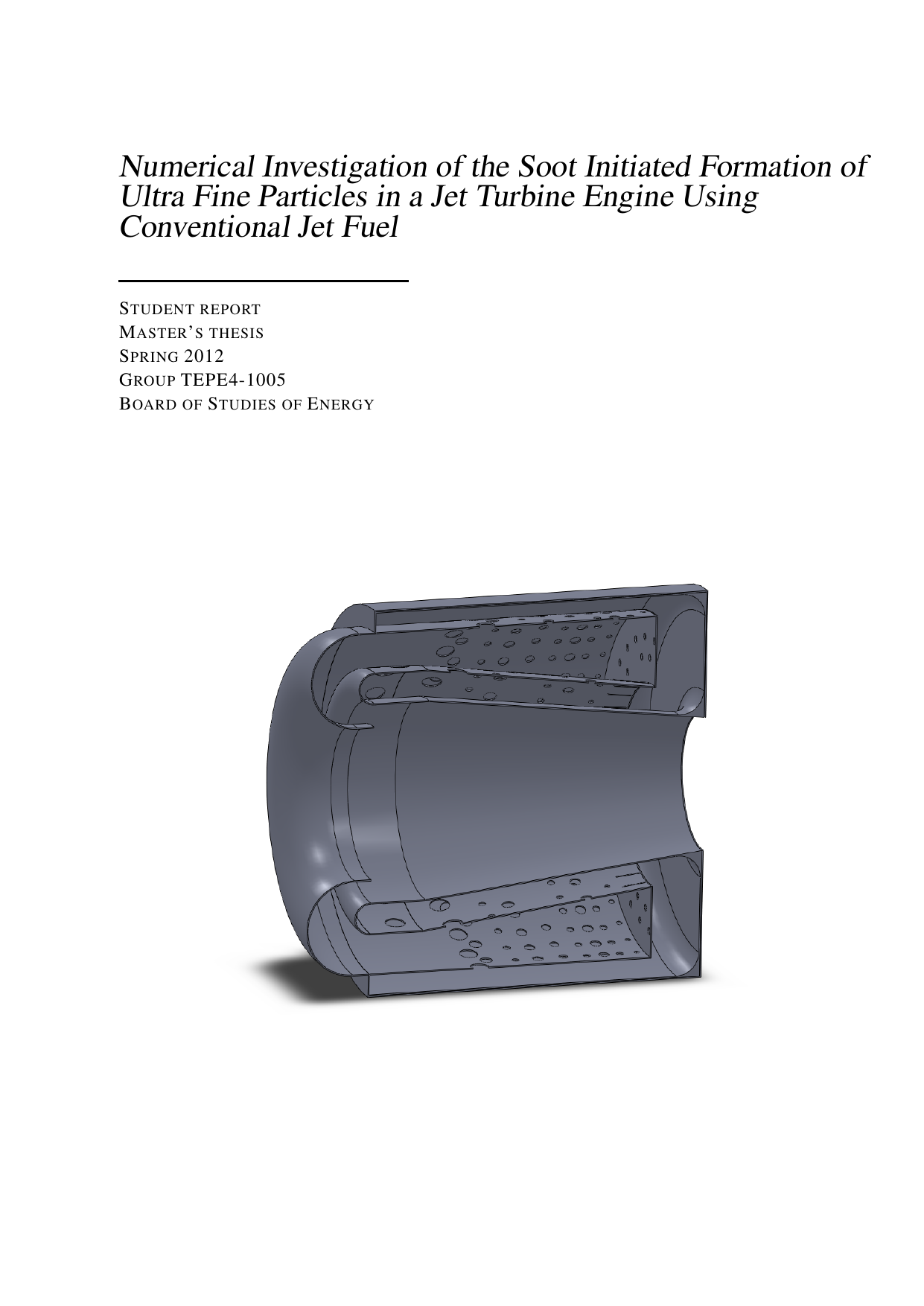
Numerical Investigation of the Soot Initiated Formation of Ultra Fine Particles in a Jet Turbine Engine Using Conventional Jet Fuel
Translated title
Numerical Investigation of the Soot Initiated Formation of Ultra Fine Particles in a Jet Turbine Engine Using Conventional Jet Fuel
Authors
Term
4. term
Education
Publication year
2012
Submitted on
2012-05-31
Abstract
A 3D numerical simulation in ANSYS Fluent, describing the combustion of Jet A in a SR-30 Turbojet Engine is made at a full-load case. This is done to investigate the formation of primary particles, which are mainly soot. The project is delimited to only focus on the formation in the combustion chamber of the turbine. A reduced reaction mechanism consisting of 38 reactions and 24 species, describing the combustion of Jet A as a surrogate fuel is used. This is chosen as it resembles the combustion characteristics of Jet A, and because soot precursors are present as species in the mechanism. From an initial literature study, the presense of soot precursors is said to predict the formation of soot under favorable conditions. A non-premixed combustion simulation is made in ANSYS Fluent, with the reduced reaction mechanism and the surrogate fuel incorporated. The boundary conditions of the model is based on results from experiments done on the SR-30 Turbojet Engine. From the results of this CFD simulation a soot formation pathway is analysed and predicted. This is compared with the soot formation model available in ANSYS Fluent. Despite it was not possible to obtain a fully evolved soot model, it indicates that the predicted soot formation is correct. In order to predict all pathways of the soot formation a more detailed reaction mechanism is needed.
Documents
